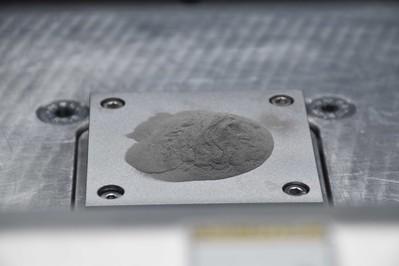
Research center HRL Laboratories has announced the commercialization of its 3D printed high-strength aluminum. The aluminum material has also received the first ever registration of an additive alloy from the Aluminum Association, which oversees alloy registration and product standards throughout industry.
HRL Laboratories’ high-strength aluminum powder has been granted registration number 7A77.50 from the Aluminum Association, while the printed alloy will be registered under number 7A77.60L. The registrations marks the first aluminum material to be added to the association’s new additive alloy registration system, which launched in February 2019 to reflect the increase in demand for AM alloys.
“Essentially, this will connect us to this particular alloy composition forever,” said Hunter Martin, the lead scientist on the HRL team that created the alloy. “These alloy numbers will always be trackable back to HRL, like a DNA signature. When I first contacted the Aluminum Association about registering our alloy, they did not have a way to register alloys printed from powders, so they decided to create a new system for registration of additively manufactured materials—a first in the materials space.”
In 2017, HRL Laboratories became the first company to successfully 3D print high-strength aluminum grades, including Al7075 ad Al6061 alloys. The materials are now nearing commercial readiness thanks in part to the Aluminum Association registration.
Zak Eckel, a member of the HRL team, said, “We’re in the process of commercializing this material, which is already in high demand. As we scale up to commercial levels, AA registration validates our product. Companies who want the powder for their 3D printers can ask for its specific number, and it becomes a true commercial alloy.”
The ability to additively manufacture high-strength aluminum alloys could open up many opportunities in a range of industries, such as the automotive and aerospace. Notably, HRL Laboratories’ unique method for the materials can also be applied to other alloy families that are difficult to print, such as high-strength steels and nickel-based superalloys.
The Aluminum Association, which provides global standards, statistics and expert knowledge to manufacturers and policy makers, can itself help to bolster the adoption of AM aluminum grades with its new registration system.
Source: 3dprintingmedia.network
Researchers have developed a way to consistently produce a special type of stainless steel known…
APF designed to enable superalloy development in direct energy deposition. Nikon has announced the release of…
Schoeller-Bleckmann Oilfield Technology GmbH (SBOT), based in Ternitz, Austria, has completed the first expansion stage…
The companies will work together to develop new standards for the energy industry using cold…
Fortius Metals, a company located in Colorado and specializing in supplying metal wires for additive…
ADNOC Gas has developed one of the energy industry’s largest digital libraries of critical components,…
This website uses cookies.